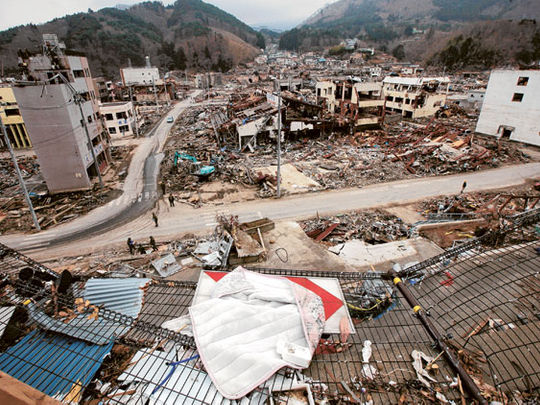
One month after Japan's ruinous tsunami, fear and uncertainty reign. The crisis at the Fukushima Daiichi nuclear plant is now ranked on par with the 1986 Chernobyl explosion. Many of the more than 160,000 homeless survivors live temporarily in schools and gymnasiums, their ‘households' defined by interior walls of corrugated cardboard. Factories and rail lines are crippled. The national economy is on the ropes. How will this proud and resourceful nation recover?
Looking to the recent history of disaster recovery, leaders are given two contrasting models for how to approach rebuilding: the heavy-handed approach of Kobe, Japan's Mayor Kazutoshi Sasayama after the Great Hanshin earthquake in 1995 or the hands-off approach of Mayor Ray Nagin in New Orleans after hurricane Katrina. Should leaders favour the heavy hand or the light touch?
Disaster experts sometimes refer to the recovery stage of a catastrophe as the ‘third act,' where Act One introduces the terrifying blow and Act Two emphasises emergency response. The longest and least dramatic part of the story, Japan's third act of recovery will determine how this tragedy is finally understood. Kobe earthquake recovery: a takeover.
That was the case following Japan's Great Hanshin earthquake, which hit the city of Kobe in 1995. In 20 seconds, that powerful quake had demolished the nation's sixth-largest city, claiming more than 6,000 lives and causing more than $100 billion (Dh367 billion) in damage. Within an hour, the city's mayor, Sasayama was surveying the ruins by car; an hour after that, he was reinventing the city's master plan based on what he had seen.
Sasayama's vision for redevelopment, and the iron resolve with which he achieved it, are legend among disaster-recovery experts. Hoping to avoid a chaos of shanties, the mayor quickly imposed a building moratorium and collaborated with national politicians to marshal a multi-billion dollar makeover of Kobe.
Over the course of 10 years, a city once characterised by narrow winding streets and rickety cottages had been transformed into a parade of boulevards, sleek condominiums, and fountains of high-rise towers, all designed with the latest safety standards in mind.
Laissez-faire approach
In New Orleans, where I live, the heavy hand was forsaken for the light touch. After hurricane Katrina and the resulting levee failures swamped the city, Mayor Nagin unwittingly became the "Anti-Sasayama."
Moved by the passion of neighbourhood activists, Nagin embraced a laissez-faire approach to the rebuilding: Property owners, aided by Louisiana's federally-funded ‘Road Home' programme, would be permitted to rebuild nearly anywhere they pleased.
Even so, market forces appear to be driving private investment (and residents) toward the more protected areas near the city's core. And, almost against the odds, New Orleans seems headed toward a future that is more economically robust, inclusive, sustainable and safe.
A new city master plan, developed with significant public input, is now in effect with the force of law. Nearly $15 billion in levee improvements offer an unprecedented level of protection.
The redevelopment challenges facing coastal Japan have already eclipsed those faced in either Kobe or New Orleans. (Estimated recovery costs now exceed $300 billion.) Japan's leaders must be honest with the public about what coastal areas can be reasonably protected against future surges and what areas cannot be, particularly given climate-induced sea-level rise. Design and safety standards for buildings, rail lines, and nuclear facilities must also be addressed.
On the other hand, local communities should be brought into the process early to make sure that proposals reflect cultural values and local attitudes toward risk. The needs of those hardest hit by tragic events — coastal fishermen, the elderly, those exposed to radioactive emissions — should be given special attention.
Despite enormous devastation, I have no doubt that Japan's suffering population will rebound. Societies smashed by quakes and floods always have.
— Christian Science Monitor
Robert Verchick is a former environmental official in the Obama administration and a law professor at Loyola University New Orleans.












